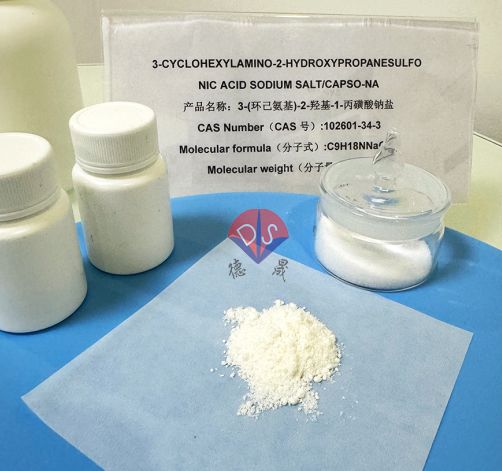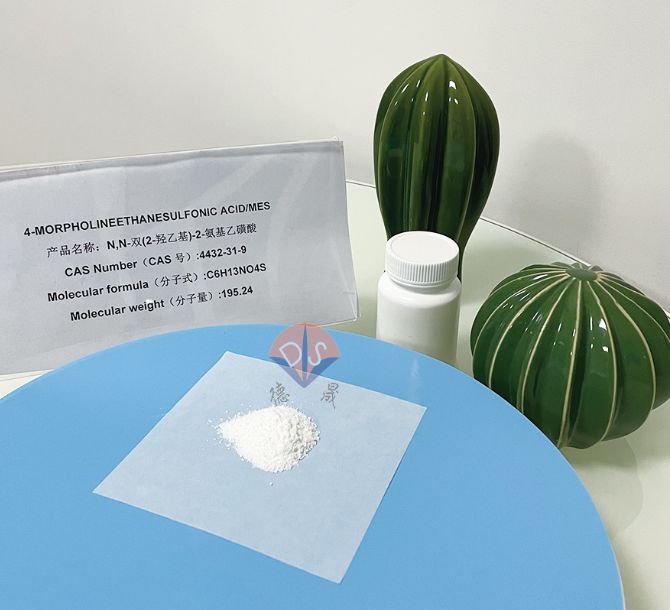How antigen antibody reactions are influenced by buffer solutions and pH values
Release time:
2025-05-13
In the immune response, antigen antibody reaction can be regarded as the core link, and the accuracy of its reaction directly affects the effectiveness of immune diagnosis. In this process, buffer solution and pH value play an indispensable role in antigen antibody reactions, influencing the progress and outcome of immune reactions from multiple aspects. A deep understanding of these influencing mechanisms is of great significance for optimizing immune detection methods and improving the accuracy of immune diagnosis.

(Biological buffer CAPSO)
1、 Electrolyte effect of buffer solution
In a solution system, antibodies and antigens exist stably in a colloidal state and do not easily settle naturally. This is mainly attributed to the structural characteristics of proteins, which contain a large number of amino and carboxyl residues in protein molecules. In a solution environment, these residues carry charges. Based on the principle of electrostatic interaction, an electron cloud with opposite charges will quickly form around protein molecules, thereby constructing a hydration layer. Due to the repulsive effect between charges, protein molecules always maintain a distance from each other, do not approach or aggregate, and do not produce precipitation phenomena.
However, when the antigen specifically binds to the antibody, the situation undergoes significant changes. At this point, the surface charge of the stable hydration layer gradually decreases, and the protein transitions from its original hydrophilic colloidal state to a hydrophobic colloidal state. But to further develop this transformation and promote the precipitation of antigen antibody complexes from the solution and the formation of visible precipitates, the participation of electrolytes cannot be ignored.
The ions contained in the buffer, such as common Na ⁺, Cl ⁻, etc., can play a crucial role in neutralizing charges. They can reduce the charge density on the surface of the composite, lower the potential of the composite, thereby breaking the original stable state, promoting the composite to approach each other and precipitate from the solution, forming the precipitation phenomenon that we can observe. It can be said that in antigen antibody reactions, without the involvement of electrolytes, even if the antigen antibody successfully binds, it is difficult to produce visible reaction results, and the entire immune detection process may not obtain accurate detection signals.
2、 The pH stabilization effect of buffer solution
Proteins, as substances with zwitterionic properties, have their specific and fixed isoelectric points. This characteristic determines that antigen antibody reactions can only proceed smoothly in a suitable pH environment. Both excessively high and low pH values can affect the spatial structure of antigens and antibodies, thereby seriously interfering with their specific binding.
Under appropriate pH conditions, antigen antibodies can achieve preliminary specific binding, where the water interaction force between water and protein molecules plays a major role. But to further enhance the hydrophobic interaction between antigens and antibodies, make the binding more firm, and promote the reaction towards the formation of precipitates, it is necessary to rely on the power of electrolytes. Electrolytes can cause protein surfaces to lose charge, thereby completing the transition from hydrophilic colloids to hydrophobic colloids and forming precipitates.
If there is a lack of buffer solution, on the one hand, even if the antigen antibody successfully binds, it cannot be converted into hydrophobic colloids and form precipitates because there is no electrolyte in the buffer solution to drive this critical transformation; On the other hand, fluctuations in the pH value of the solution will become difficult to control, and this unstable pH environment is highly likely to trigger protein self coagulation, causing protein molecules to aggregate in disorder or leading to protein degradation, disrupting its original structure and function. Whether it is protein self coagulation or degradation, it can seriously interfere with the normal progress of antigen antibody reactions, reduce the accuracy of immune testing, and even lead to serious deviations in test results.
3、 Buffer system selection
Different buffer solutions have different buffer ranges and ionic strengths, which can affect the speed and specificity of immune responses. When choosing a buffer solution, multiple factors need to be considered comprehensively. For some antigen antibody reactions that are sensitive to pH changes, a buffer solution with a suitable pH range should be selected to ensure pH stability during the reaction process; For reactions that require high binding affinity to antigen antibodies, it is necessary to choose a buffer solution with appropriate ionic strength to balance binding affinity and non-specific binding. In enzyme-linked immunosorbent assay (ELISA), different buffer systems may affect the binding efficiency between enzyme-linked antibodies and antigens, as well as the intensity of colorimetric reactions. Therefore, it is necessary to screen for suitable buffer systems through experiments.

(MES buffer)
Hubei Xindesheng Company, as a leading manufacturer of biological buffering agents, supplies a full range of products with high purity and strong stability. From research and development to production, we strictly control the quality, providing reliable raw material support for scientific research institutions, IVD enterprises, and meeting diverse experimental and production needs. If you need it, please feel free to contact us!
Previous page
Previous page
Contact details
Contact number
Address: C8, Guanggu United Science and Technology City, Ezhou City, Hubei Province
Fax:0711-3704 589
Follow us



